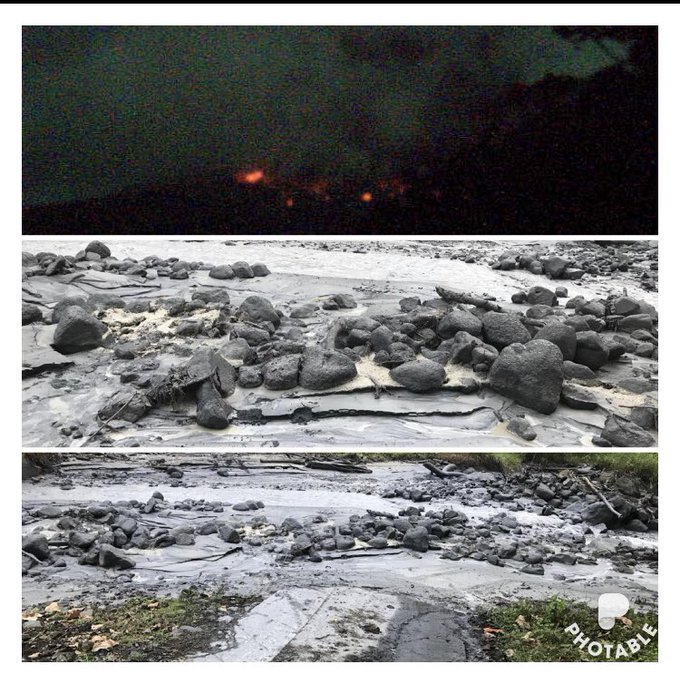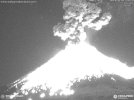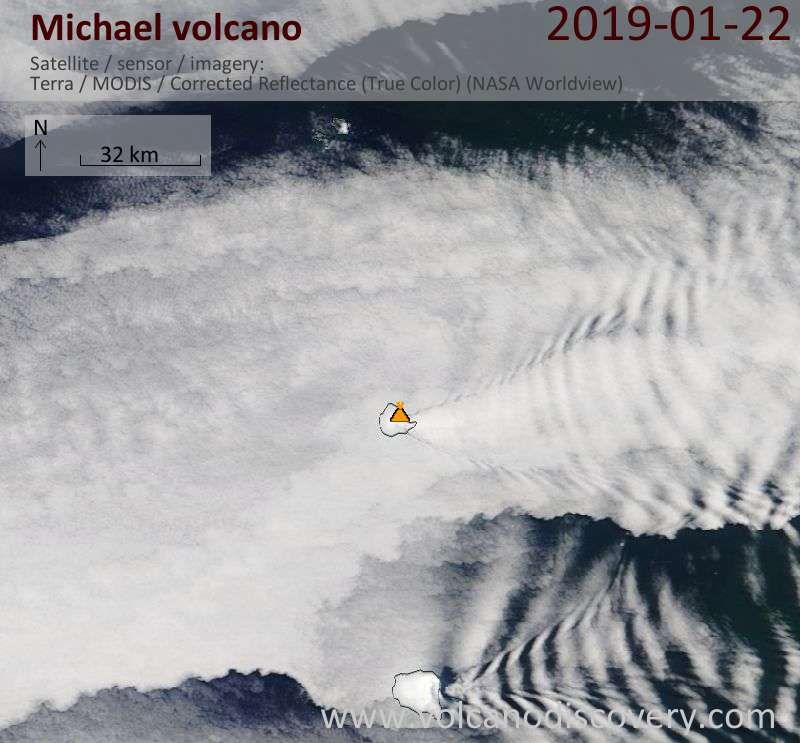Large number of dead fish, sulfur smell reported, Mayotte seismo-volcanic crisis intensifies
A large number of dead fish emerged at various sites off the barrier reef just east/southeast of Mayotte, the oldest volcanic island in the Comoros Basin located between Madagascar and Mozambique. This is the site of an intense earthquake swarm that started in May 2018 and continues to date.
Visual observations of dead fish are accompanied by a strong smell of gas, burning rubber, plastic or sulfur, officials said January 14. The information was confirmed by the representatives of the Fishermen's Cooperative of Mtsapere.
Specialists were immediately sent to the area to make an assessment, Mayotte Prefecture officials said in a
statement released January 14 and asked fishermen to obtain additional information, including photographs, location and extent of the phenomenon and report them to DMSOI to help scientists determine the cause of the phenomenon.
There are several possible causes, including a direct link with the earthquake swarm and its volcanic origin which could have disturbed the fragile ecological balance of the shallows in which this fauna evolves, officials said.
Similar situations have been observed in lava flows at sea in Réunion in 2007 and Hawaii in the past.
Following additional information provided by fishermen, the prefecture released an
update on January 15, recommending fishermen to exercise particular vigilance when approaching the following points:
12°51.99S 12°38.59S 13°01.27S 13°08.10S 13°24.03S 13°21.45S
045°26.11E 045°32.59E 045°21.04E 045°17.25E 045°01.50E 045°09.53E
Image credit: Google, The Watchers
Fishermen are urged not to fish in areas giving off a strong smell of gas, burning rubber, plastic or sulfur.
"Stay away from these areas and exercise great caution. Do not take any risk," Prefecture officials said.
Fishermen were asked to immediately inform the authorities of any new event, note their geographical positions, take photographs and handle fish samples to Marine Nature Park officials.
It is strictly prohibited to proceed with the sale of recovered fish, they said.
The population is asked to be very vigilant and refuse to buy and consume fish that are not usually found on the stalls.
"The news started to increase anxiety levels again, along with mistrust towards the authorities and scientific community. Citizens are craving to understand what's going on," Laure Fallou, EMSC's seismosociologist said.
Image credit: Google, EMSC, The Watchers
The
swarm started at 05:14 UTC on May 10, 2018 and increased around 12:00 UTC with magnitudes close to 3.0. Magnitudes further increased to 3.5 and 3.7 by 16:40 UTC.
The first quake felt by the population was M4.5 at 23:19 UTC on May 10, according to the BRGM, the France-based geological agency serving the territory.
This abnormal earthquake swarm continued for the next two months, creating anxiety and stress among locals and forcing authorities to open up a psychological support unit on June 12.
While there have been no serious injuries or fatalities, locals reported minor damage to buildings, including a school in Dembeni. In addition, at least 10 families have been evacuated from damaged homes and temporarily relocated.
Mayotte’s firefighters are conducting drills designed to simulate rescuing people trapped by a landslide, and emergency experts are teaching island residents to check their homes and businesses for cracked walls or other signs of stress,
Africa Times reported June 30, 2018.
One resident told the paper he left his home because of meters-long cracks in the walls, along with his 80-year-old mother who had become agitated by the hundreds and hundreds of quakes that are strong enough to be felt. Many people slept in the streets when the swarm began, unsure if the shaking would become worse and potentially collapse their homes and trap them inside.
Others began to have anxiety attacks, with each quake followed by dozens of calls to Mayotte’s regional health authorities.
The head of Pamandzi College said in a television interview that some teachers are on sick leave because they do not sleep at night. Other teachers do not plan to return to Mayotte after the school holidays if the seismic activity continues, he said.
Image credit: BRGM
An atypical very low frequency signal originating near the island of Mayotte was detected by international networks around the world just before 09:30 UTC on November 11, 2018. The signal repeated in a wave about every 17 seconds, lasting for about 20 minutes in total. Signals of this type are characteristic of volcanic phenomena, BRGM scientists say.
"The appearance of this earthquake swarm in May 2018 took scientists by surprise. Geological knowledge of the swarm zone is limited, but a clearer understanding of the phenomenon is emerging as observations continue. Different hypotheses as to their causes have been investigated."
In addition to the seismic measurements used to track how this swarm is evolving, new data were analyzed in October and November 2018, especially those on deformation of the island's surface (GPS measurements by the IGN). The team working at the Geology Laboratory of the Ecole Normale Supérieure in Paris has shown that the current phase in the swarm is accounted for by a volcanic component.
"These observations, therefore, back up the hypothesis of a combination of tectonic and volcanic effects accounting for a geological phenomenon involving a seismic sequence and a volcanic phenomenon," BRGM said in November 2018, adding that this hypothesis will need to be confirmed by future scientific studies.
"The location of the swarm is on the edge of the geological maps we have,"
said Nicolas Taillefer, head of the seismic and volcanic risk unit at BRGM. "There are a lot things we don't know."
Image credit: ENS
Since mid-July [to November 2018], GPS stations on the island have tracked it sliding more than 61 mm (2.4 inches) to the east and 30 mm (1.2 inches) to the south, according to
data provided by the Institut National de L’information Géographique et Forestière.
Using these measurements, Pierre Briole of the Ecole Normale Supérieure in Paris estimated that a magma body that measures about 1.4 km3 (0.3 mi3) is squishing its way through the subsurface near Mayotte.
The last known volcanic eruption in this area took place in 2050 BCE ± 500 years.
Geological background
Mayotte Island in the Mozambique Channel between the northern tip of Madagascar and the eastern coast of Africa consists of two volcanoes with diverse geochemistry that were active from the Pliocene to the Holocene.
Lavas on the NE were active from about 4.7 to 1.4 million years and on the south from about 7.7 to 2.7 million years.
Mafic activity resumed on the north from about 2.9 to 1.2 million years and on the south from about 2 to 1.5 million years. Morphologically youthful-looking maars are present on Mayotte Island, and Zinke et al. (2003) found several pumice layers of Holocene age in gravity cores on the barrier reef-lagoon complex at Mayotte. (GVP)








